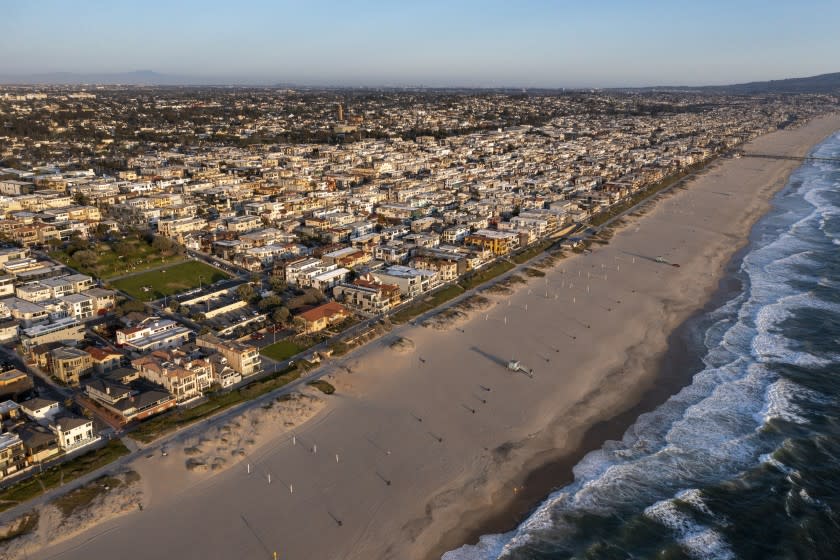Southern California swimmers should beware of strong currents after Alaska earthquake

Southern California swimmers should beware of strong and unusual currents in local harbors Thursday morning after an 8.2-magnitude earthquake in the waters off Alaska late last night.
There is no threat of a tsunami in California or anywhere along the West Coast, including Alaska, the National Tsunami Warning Center said.
But National Weather Service forecasters said it was a "good idea not to go swimming" in Southern California harbors on Thursday.
"We were expecting some very, very, very minor surges in and out of port," said meteorologist David Sweet of the NWS' Los Angeles office.
Remember, even though there is no threat of a tsunami affecting California, there will be strong and unusual currents today, especially in local harbors. Good idea not to go swimming in harbors today. #cawx #SoCal #LAweather https://t.co/L2Y5iVWPXr
— NWS Los Angeles (@NWSLosAngeles) July 29, 2021
The quake struck in the ocean 75 miles southeast of Chignik, Alaska, just south of the Alaska Peninsula, Wednesday at 11:15 p.m, according to the tsunami warning center. It hit about 20 miles below the ocean level. The U.S. Geological Survey counted more than 250 people who said they'd felt it.
Tsunami alerts briefly issued for Hawaii and parts of the Alaskan coastline were soon canceled.
"A tsunami is caused by an undersea earthquake that causes a landslide, if you will, or some sort of situation that will displace the water next to a sea cliff, such that it causes a disturbance in the ocean surface," Sweet said. "And when that wave reaches shallower water, of course it causes the wave to build up, and they get bigger and bigger."
"It's going to take a while for those waves to travel across the ocean and finally reach Southern California," he added. "At some point, those little currents that were below advisory level are expected to impact some of the ports, but not at a point where we would expect any trouble."
This story originally appeared in Los Angeles Times.

